Plaster cast after a fracture (EN) Plaster cast after a fracture (EN)
- Isala
- Patiëntenfolders
- 8542-Plaster cast after a fracture
After a bone fracture, you often get a plaster cast. The plaster cast holds the bone parts in place so that the bone can heal. This leaflet describes the different types of plaster casts and what you can and should not do when you have a plaster cast.
What is a fracture?
A fracture is a broken bone. A fracture can be big or small. It can be a small crack in the bone, but the bones can also be completely shifted or crushed. A bone fracture can also run through a joint.
A plaster cast is mainly applied to bone fractures in which the bone parts have not (or hardly) shifted. The plaster cast holds the bone parts in place so that the bone can heal neatly.
Some bone fractures do not require a plaster cast and heal by themselves. This is the case, for example, with a fracture of the collarbone.
Types of plaster cast
Splint
If a plaster cast is needed, you will usually be given a splint first. A splint is a plaster cast that is open on one side. If any swelling occurs, the plaster cast will not tighten.
You can also get a splint after surgery on your foot or leg so that you can move around with support from the splint.
Full plaster cast
When the swelling has gone down, you will get a plaster cast around your foot. This usually happens after about a week. In some fractures of the foot or ankle, a walking cast is possible.
A full plaster cast is almost always made of synthetic material. This is lighter, stronger and easier to walk with.
Flying with a plaster cast
It is an international rule that flying with a full plaster cast is prohibited. This is because of pressure differences in the cabin. During flying, your hands and feet may swell a little due to fluid accumulation. This can cause the plaster cast to become (too) tight. If you want to fly, please discuss this with your airline and your doctor. We can look at the possibilities together in the plaster room.
More information on this subject is available: see the end of this leaflet on our website, under the heading 'Related leaflets'.
Swimming with a plaster cast
There are plaster casts that are allowed to get wet and dry quickly. This is called a swimming cast. The surgeon and medical technician can assess whether a swimming cast is a possibility.
Daily routine
- Plaster casts take 24 hours to fully harden. Synthetic casts take 20 minutes.
- Do not wear jewellery on your hand or arm. Rings are difficult to remove when swelling occurs.
- You can prevent problems with blood circulation and swelling by:
wearing a sling;
elevating your arm;
exercising your fingers. - Keep your plaster cast dry or it may become soft. Even synthetic casts should not get too wet. Special shower covers are available to protect the cast and your skin when showering. You can buy a cover at most pharmacies. Or you can order one by phone from Lomed: +31 73 641 74 64.
If your plaster cast accidentally gets a little wet, try to dry it with a hairdryer. Call the plaster room if this does not help.
Keep moving
Keep it raised
Keep your arm or leg elevated for the first week (see figures 1 and 2).
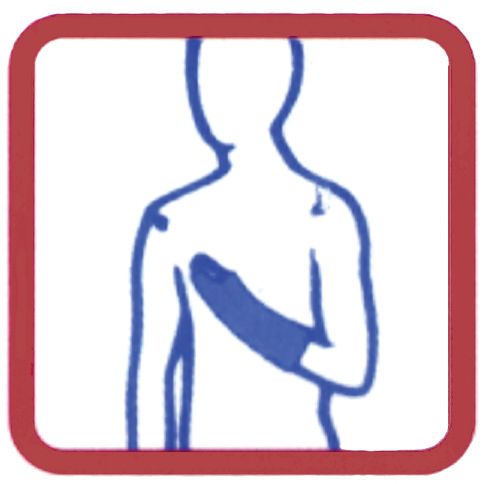
Figure 1
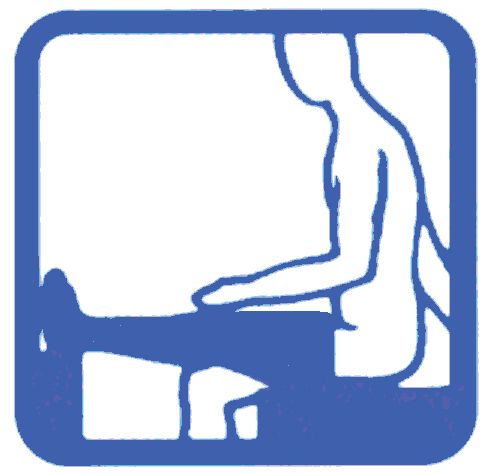
Figure 2
Arm
Exercises with a cast on your arm:
- Stretch your fingers completely and make a fist several times every hour.
- If you have a plaster cast up to your elbow, raise your arm to shoulder height several times a day. Bend and stretch your elbow (see figure 3).
- If you have a plaster cast up to the shoulder, raise your arm to shoulder height several times and rotate it.
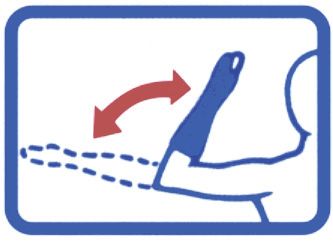
Figure 3
Leg
Exercises with a cast on your leg:
- If you have a plaster cast around your upper leg, stretch your leg in front of you several times a day (see figure 4).
- If you have a plaster cast around your lower leg: bend your knee and hip several times a day and move your toes (see figure 5).
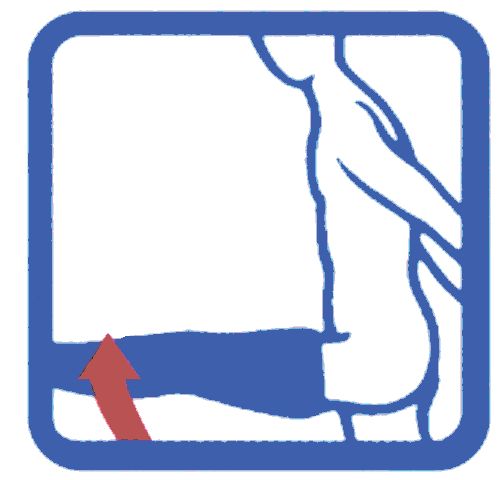
Figure 4
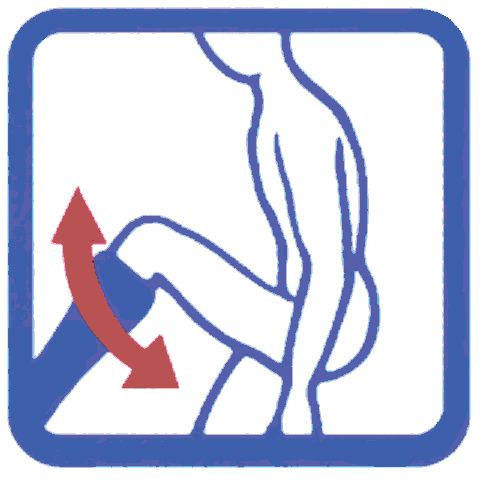
Figure 5
When to call the hospital
Call the hospital if you experience the following symptoms:
- a strong, increasing pain that does not go away when you sit or lie differently;
- swelling or blue or white discolouration of your toes or fingers;
- numbness of the fingers or toes;
- if objects get stuck between your plaster or synthetic cast and your body.
Removing your plaster cast
The plaster cast is removed in the Plaster Room at Isala. The medical technician usually removes the plaster with the plaster saw and sometimes with the plaster scissors. The plaster saw does not saw but vibrates through the plaster under light pressure. You do not have to worry about the saw touching your skin or your surgical wound; a thick layer of cotton wool under the plaster prevents this.
Removing the plaster cast from the (lower) leg:
- Bring sturdy shoes with you when the plaster cast is removed from your (lower) leg. You are usually allowed to walk again immediately.
- After the removal of the plaster cast, slight swelling may occur. This swelling may get a little worse during the day. This is not serious. The swelling will then slowly subside. It often helps not to put too much strain on your leg/arm and to elevate it.
Contact
If you have any questions, please call:
The Plaster Room
+31 (0) 88 624 53 15 (available from Monday to Friday from 8:30 to 17:00)
+31 (0) 88 624 50 00 (outside office hours)
If you are unable to make your appointment, let us know as soon as possible and we will schedule a new one.
We expect to see you on:
Date Time Doctor/Department Location
